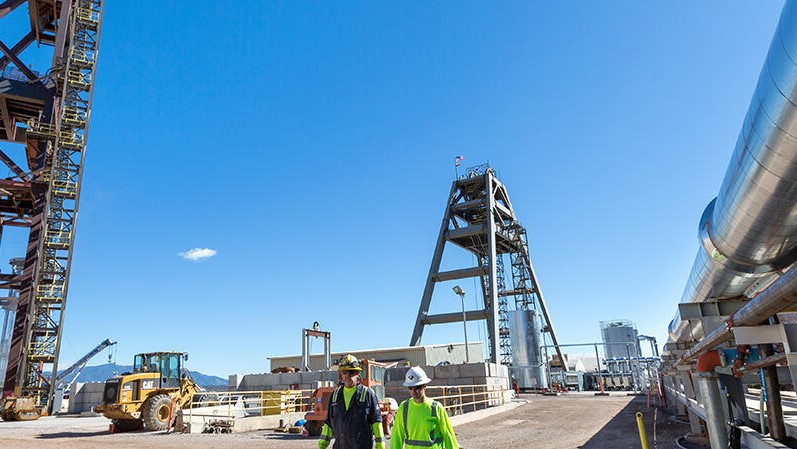Resolution Copper says it welcomes the next phase of public review and comment with the release by the US Forest Service (USFS) of its Final Environmental Impact Statement (FEIS) for the Resolution Copper Project. The Resolution Copper Project is operated by Resolution Copper Mining, which is a limited liability company owned 55% by Resolution Copper Company (a Rio Tinto PLC subsidiary) and 45% by BHP Copper Inc (a BHP PLC subsidiary).
The Forest Service, which is an agency of the US Dept of Agriculture (USDA) stated: “The Tonto National Forest prepared the FEIS for use as the basis for all decisions under Federal law related to the proposed mine and the Resolution mine plan of operations and any related major Federal actions significantly affecting the quality of the human environment.”
“Our multiple use mission means that we have to balance demand for mineral extraction and the related economic benefits with our commitment to environmental stewardship and sustainability,” said Tom Torres, acting Tonto National Forest supervisor. “The Forest Service is required by regulation to consider mining plans of operations on our public lands, ensure the plans comply with environmental regulations, and minimise any adverse impacts to the extent feasible. This project is complex, and the impacts were rigorously analysed over the past five years. The final EIS and resulting draft decision include numerous changes and mitigation measures that seek to minimise the environmental effects from the mining operations, especially the new location of the tailings facility.”
“The project also included consultation with affected Indian tribes to best address the negative impacts to sacred tribal lands,” Torres added. “Consistent with the legislative language, we have sought to address these impacts in consultation with the mining company and will establish numerous programs to alleviate those concerns now and into the future.”
“The Final EIS is an important step in the ongoing permitting process, reflecting years of extensive community engagement and rigorous, independent study by the US Forest Service to shape the design plan. We are still years away from any decision to invest in developing this project, that could eventually supply up to one-quarter of the nation’s copper demand, bringing jobs and lasting economic benefits to Arizona and supporting America’s clean energy future,” said Resolution Copper Project Director Andrew Lye.
“We are committed to ongoing engagement with Native American Tribes and working to seek consent before any decision on the development of the project, consistent with the International Council on Mining and Metals (ICMM) Statement on Indigenous Peoples and Mining.”
As the lead agency charged with overseeing the federal approval process mandated by the National Environmental Policy Act (NEPA), the USFS has spent more than seven years studying the potential impacts of the project and collecting feedback from local stakeholders. With assistance from dozens of county, state and federal cooperating and consulting agencies, as well as 11 local Native American Tribes and community leaders, third-party experts from the USFS considered more than 30,000 public comments, which were submitted in response to the Draft EIS that was published in August 2019.
Several significant changes were made to the project design in response to community feedback. Notably:
- The permanent protection of the culturally significant natural feature of Apache Leap
- A Tribal Monitor program focused on cultural heritage protection
- A partnership to protect and conserve culturally significant Emory Oak groves across Arizona
- Economic and community development agreements that can deliver significant long-term benefits for the Superior community
Through the NEPA process, dozens of alternatives to the original mine plan proposal, including different tailings locations and technologies, as well as alternative mining methods, were independently analysed. The Final EIS also outlines mitigation measures to future potential impacts involving noise, lighting, visual, traffic, housing, socioeconomics, air, surface water, groundwater, water quantity, water quality, land, cultural resources, tribal values, and more.
To date, more than $2 billion has been spent to develop and permit the project, including reclamation of the historic Magma Copper Mine site, sinking a second shaft to mining depth, rehabilitating an existing shaft and deepening to mining depth, extensive drilling and ore body testing, and the federal approval and public engagement process.
“Resolution Copper is poised to supply up to one-quarter of the nation’s copper demand, a critical step toward delivering a low-carbon future. The project has the potential to create approximately 3,700 direct and indirect jobs in Arizona. Overall, the project could bring $61 billion in additional economic value to Arizona over the estimated 60-year life of the mine, creating lasting benefits for the region and playing a vital role in the nation’s economic recovery.”
The Final EIS is now subject to 45 days of further public review and comment before the USFS can issue a final record of decision, which is expected in the second half of 2021. The EIS publication triggers a land exchange approved by Congress under the Obama administration in 2014, whereby 5,459 acres of high-value conservation land will be transferred to the Federal Government in return for Resolution Copper taking ownership of approximately 2,422 acres around the mining site.
After the USFS process, further permitting will be progressed with other authorities and a detailed feasibility study completed over several years to inform investment considerations on the project. When an investment decision is made, Resolution Copper is expected to take around 10 years building infrastructure to prepare for the commencement of mining.











